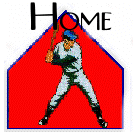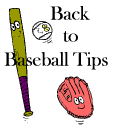|
|
"Keep Your Shoulder In There" I am firmly convinced that the rule, "Keep your shoulder in there," has been a major deterrent to the development of good hitters. It leads to a slower development of bat speed and, along with creating other biomechanical problems; it can cause the wrists to roll prematurely. The rule certainly has merit during the stride and pre-launch positioning, but far too many coaches think it also applies during the swing. They contend that rotating the shoulders at the start of the swing will cause the player's head and body to "fly out." Many coaches also claim that shoulder rotation leads to problems of seeing the ball and reaching the outside pitch. Ironically, at the same time they claim that shoulder rotation will cause the swing to go wide. Additionally, many coaches contend that the main role of the shoulders is to provide a platform for the arms to swing from. Lastly, they believe that shoulder movement is intended to "clear out" the front side and allow the hands to come through. I think we can all agree that a great deal of the energy for the swing comes from the hips. However, I would ask that you consider the following: what would happen if I picked up a bat and "popped" my hips while holding my shoulders still? Would I develop any bat-speed? -- Now be careful if your thinking that energy can just mysteriously jump from the hips to the bat. It would seem logical that for energy from the rotating hips to be transmitted up and out to the bat head - the torso and shoulders would also have to rotate. But, implying that shoulder rotation may be just as important as hip rotation may cause some (above mentioned) coaches to challenge your credibility. Now suppose that I pop my hips and rotate the shoulders, but had enough slack in my arms that the hands did not move. Did I generate any bat speed? -- The point I'm trying to make is this: No matter what batting mechanic you choose, it can only have an impact on bat speed when it causes the hands to exert a force on the bat. This is why I have trouble with mechanics that would have the batter opening his hips while keeping the hands back. Hip rotation without a corresponding acceleration of the hands would be nothing more than a positioning move, not to generate bat speed. The same could be said for "clearing out" the lead shoulder. When we consider the mechanics that a great hitter uses to generate bat speed, it is important to keep in mind that the bat does not know if a superstar or a machine is swinging it. The bat can only react to the forces being applied to it. The objective should be to define the forces acting on the bat that generate bat speed. Then, and only then, can we understand and develop mechanics that deliver those forces. The "keep your shoulder in there" rule does have merit during the stride and balance procedure a batter takes in preparation for the swing. However, any premature opening of the shoulders before the initiation of the swing will result in a loss of power. It is a valid argument for coaches to be concerned with a hitter "bailing out," which leads to many problems. But the solution is not to have the batter keep his shoulders in place and become an arm swinger. Generating higher bat speeds requires the energies developed by the large muscles in the legs, hips and back to be transferred up and out to the bat. That transfer can only take place by the rotation of the entire torso - shoulders included. I will conclude by pointing out that the shoulders (and body) should rotate around a stationary axis (the spine). Therefore, the head and center of balance will also remain stationary during the swing. When batters rotate around the proper axis, they will not have a problem with "bailing out." The problems begin when the center of rotation is not the center of the body. info acquired from www.batspeed.com
[Official Little League Rules & Regulations] [Parents] [Players/Kids]
Learn How to: Copyright © 2000 Brookside Little League, Inc. All rights reserved Brookside Little League, Inc. Indianapolis, In
We would
love to hear from you! |
|||






